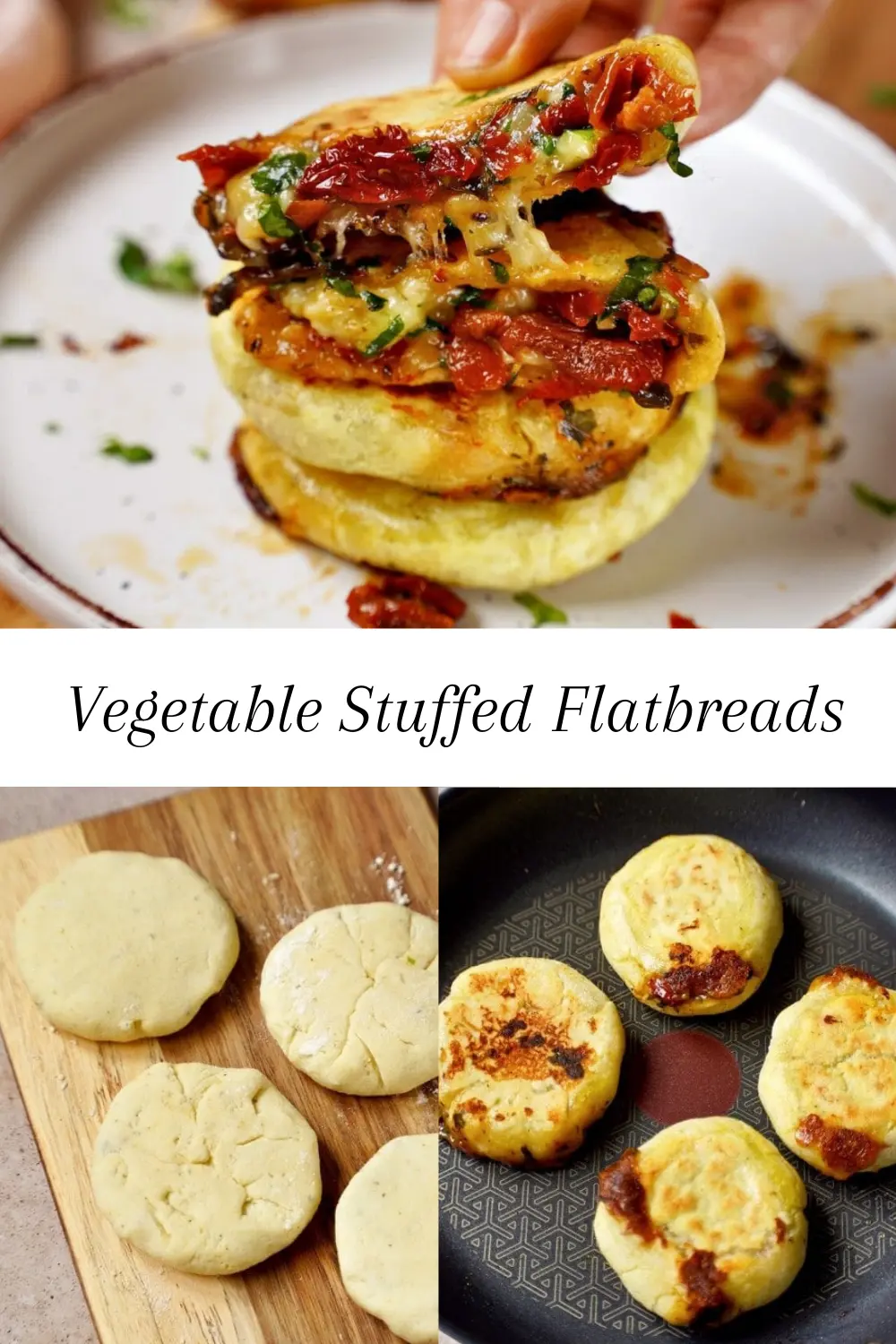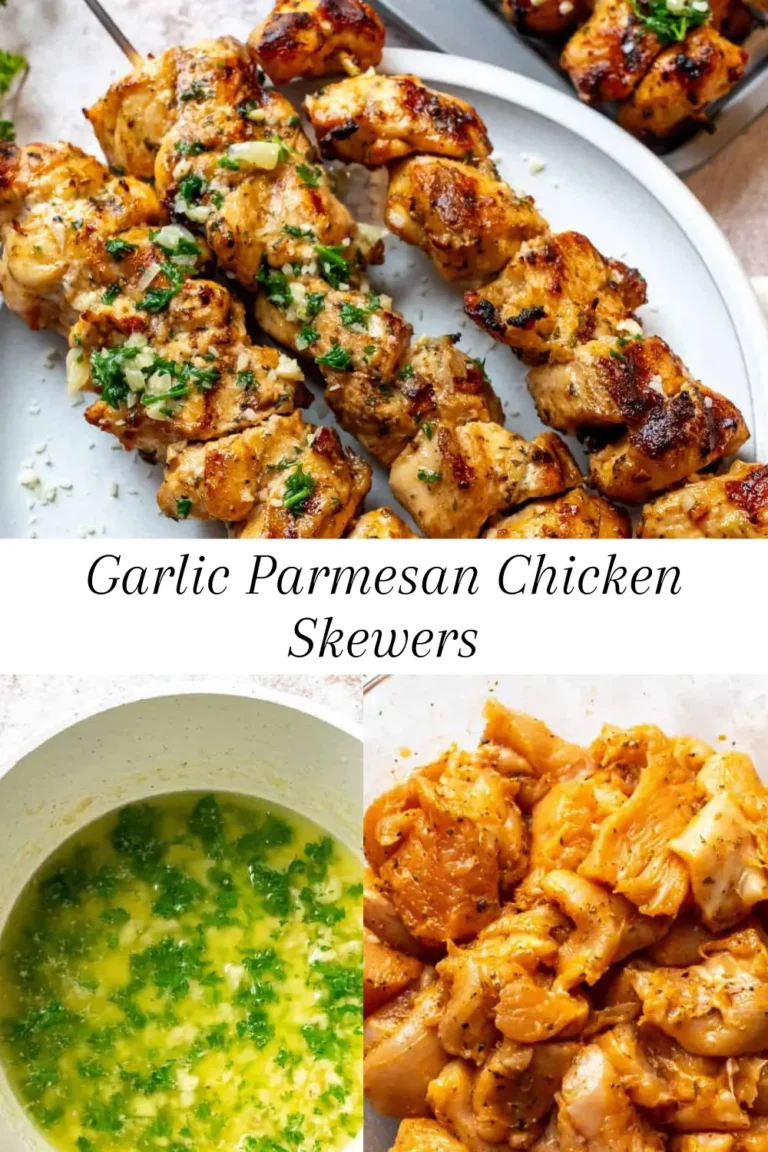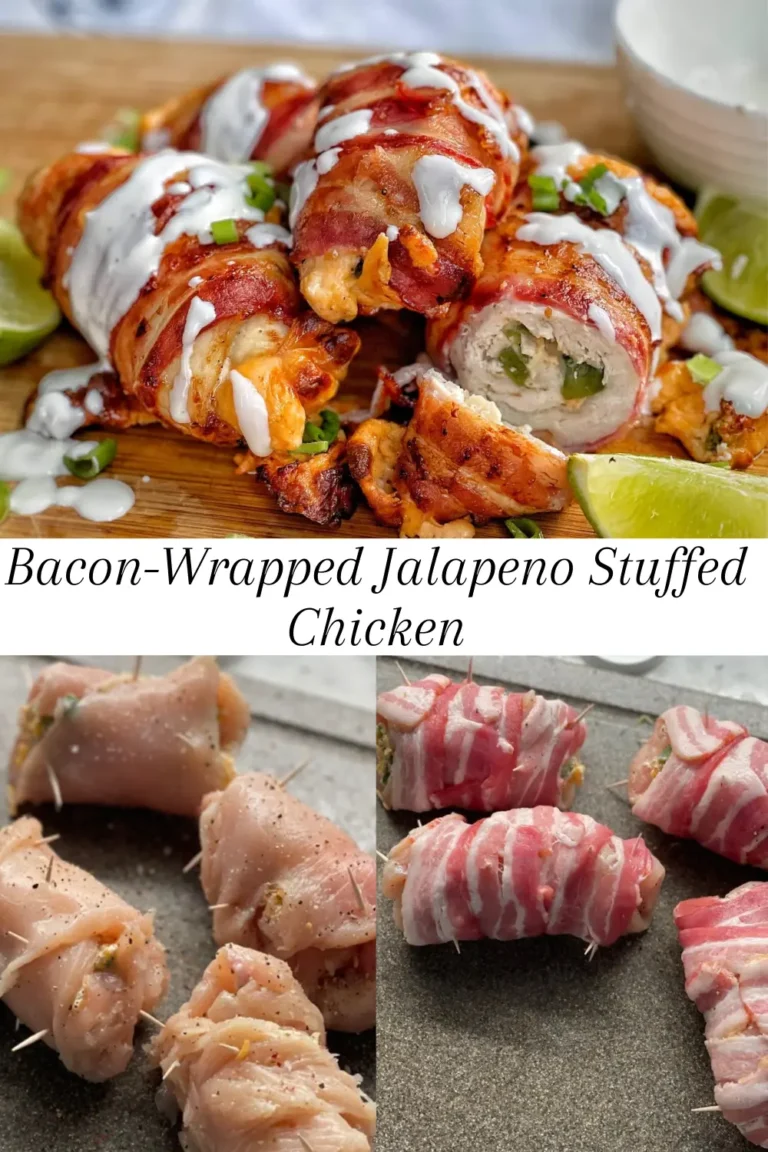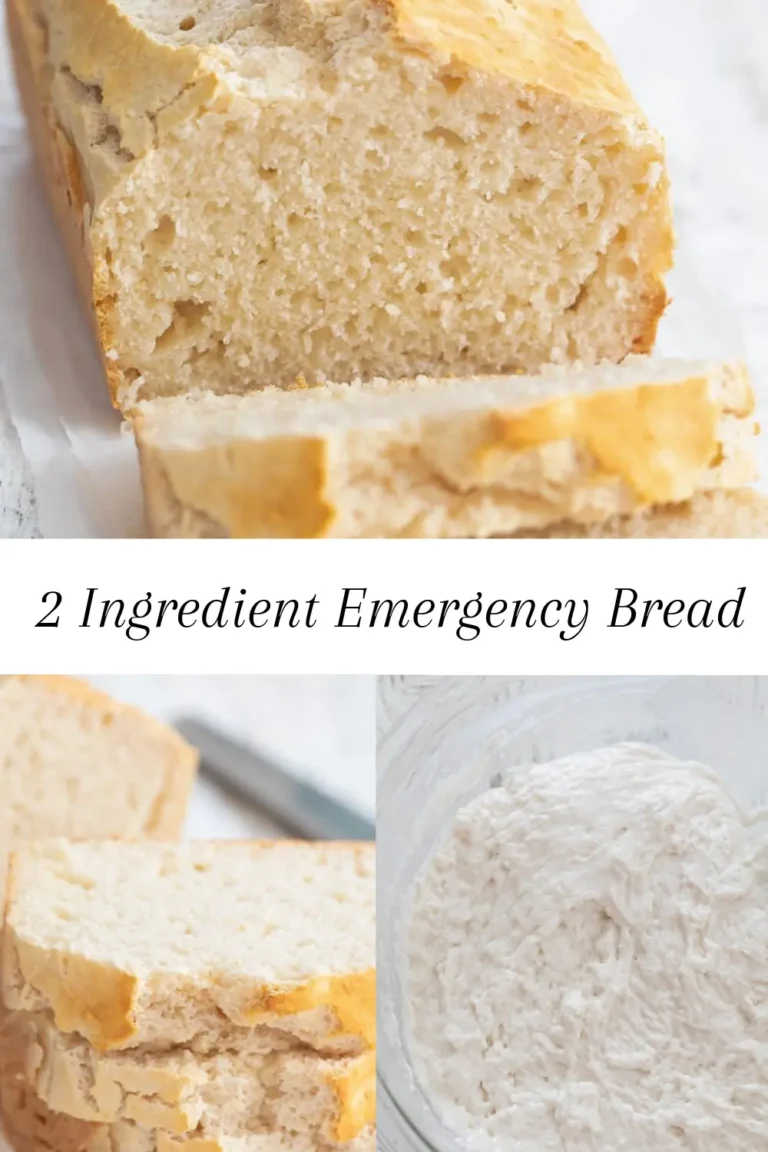Vegetable Stuffed Flatbreads
Stuffed flatbreads have long held a cherished place in the culinary traditions of many cultures, serving as a testament to their versatility and wide-ranging appeal. Each region offers its unique twist, from the savory Indian parathas, packed with a plethora of vegetables and spices, to the Middle Eastern manakeesh, laden with tangy herbs and cheeses. The concept of encasing ingredients within a doughy exterior is universally beloved, uniting disparate culinary traditions through a common love for hearty, flavorful bites.
My first encounter with vegetable stuffed flatbreads remains etched in my memory. It was during a bustling street market visit in Delhi, where the air was thick with the scent of sizzling spices. At a humble stall, I tasted a freshly made paratha, its crust golden and crisp, and its filling an aromatic blend of potatoes, peas, and spices. The flavors were vibrant and comforting, evoking a sense of homeliness and nostalgia that transcended the hustle around me.
Stuffed flatbreads offer more than just a delightful eating experience; they bring comfort and a touch of creativity to the dinner table. The process of making these flatbreads can be as rewarding as the final bite, transforming simple vegetables into something extraordinary. This recipe allows for endless variations, making it a wonderful canvas for showcasing seasonal produce or indulging in culinary experimentation.
Whether enjoyed as a hearty breakfast, a satisfying lunch, or a delicious side to a larger meal, vegetable stuffed flatbreads are sure to become a household favorite. They embody a sense of warmth and familiarity, promising a nostalgic journey back to simpler times while inviting new memories to be made. This blend of tradition and innovation makes them an irresistible addition to any kitchen repertoire.
Crafting the Perfect Flatbread
Creating the ideal flatbread begins with the right selection of ingredients and a meticulous approach to technique. The foundation is the flour, which can significantly impact the texture and flavor of your vegetable stuffed flatbreads. For those who prefer a traditional approach, all-purpose or whole wheat flour offers a robust texture and a hearty flavor. However, for a gluten-free variant, opting for a blend of gluten-free flours such as rice flour, almond flour, and tapioca starch can ensure a tender and cohesive base.
Adding baking powder is essential as it interacts with the flour to introduce lightness and fluffiness. A pinch of salt, on the other hand, enhances the overall flavor profile, subtly lifting the taste of the flatbread without overpowering the vegetables. Another crucial ingredient is dairy-free yogurt, which helps achieve a moist, pliable dough. This yogurt not only tenderizes the dough but also adds a slight tanginess that complements the vegetable stuffing.
Mastering the art of kneading is fundamental to developing the elasticity required for a perfect flatbread. Kneading helps to align the proteins within the flour, which in turn, forms a network that traps air and leads to a chewy yet soft texture. A commonly faced challenge is over-kneading, especially for those new to the process. The dough should be worked until it is just smooth and slightly tacky, avoiding excessive firmness.
Allowing the dough to rest is equally important. Resting enables the gluten strands to relax, making the dough easier to roll out and handle. Aim for a resting period of at least 30 minutes, covering the dough with a damp cloth to prevent it from drying out. This step is often rushed, but patience here pays off in achieving a dough that is supple and easy to work with.
Personal experience often highlights the importance of practice and patience in overcoming common hurdles. Dough that might initially seem sticky or difficult to manage can often be corrected with adjustments in flour or resting time. Understanding these subtleties not only leads to better results but also enriches the journey towards perfecting your vegetable stuffed flatbreads. By selecting quality ingredients and mastering the technique, you pave the way for a flawless flatbread base that will elevate your culinary creations.
Creating the perfect vegetable filling for stuffed flatbreads requires a harmonious blend of exquisite ingredients, each contributing its unique flavor and texture. At the heart of this filling are sun-dried tomatoes, whose natural sweetness and tanginess provide a delightful contrast to the other components. Sun-dried tomatoes, when finely chopped, release a burst of flavor that enhances this rich mixture.
Adding to this complexity are vegan cheese and cream cheese, each bringing a velvety creaminess that melds seamlessly with the other ingredients. The vegan cheese, often made from nuts or soy, offers a nutty undertone, while the cream cheese delivers a smooth, luscious texture, essential for creating that irresistibly creamy bite in every piece of flatbread.
No vegetable filling is complete without a touch of garlic and Italian seasoning. The minced garlic introduces an aromatic sharpness that awakens the senses, while the Italian seasoning—a blend of herbs such as basil, oregano, and thyme—infuses the mixture with a fragrant, herbaceous note. Together, they elevate the overall taste profile, ensuring every bite of the vegetable stuffed flatbreads is bursting with flavor.
To prepare this filling, one starts by grating the vegan cheese to achieve an even distribution throughout the mixture. Next, finely chop the sun-dried tomatoes and mince the garlic. Combine these with the vegan cream cheese in a mixing bowl, seasoning with Italian herbs, salt, and pepper to taste. It’s crucial to achieve a balanced seasoning, as it harmonizes the disparate flavors into a cohesive whole.
To cater to various tastes, the filling can be customized with additional vegetables. Bell peppers, spinach, or zucchini can offer extra layers of flavor and nutrition. Sauté these vegetables lightly before mixing them in to maintain their vibrant colors and slight crispness. This versatile filling ensures that, whether indulgent or health-conscious, the vegetable stuffed flatbreads meet every culinary desire.
Assembling and Cooking Your Vegetable Stuffed Flatbreads
Creating the perfect vegetable stuffed flatbreads begins with the assembly process. Start by rolling out your dough evenly on a lightly floured surface. This is crucial to ensure each flatbread cooks uniformly. Aim for a thickness of about 1/8 inch, which allows for a good balance between a crisp exterior and a soft, chewy interior.
When it comes to adding the filling, be mindful not to overstuff. Evenly spread your vegetable mixture over half of the rolled-out dough, leaving about an inch margin around the edges. This ensures easy folding and prevents the filling from bursting out during cooking. Fold the dough over the filling and press the edges together firmly with a fork or your fingers to seal, creating a neat and secure pocket.
There are several methods to cook your vegetable stuffed flatbreads. Pan-frying is the most common and lends a beautifully crisp exterior while maintaining the softness inside. Heat a small amount of oil in a pan over medium heat and cook each side for about 3-4 minutes until golden brown. Baking is another great option and requires preheating your oven to 375°F (190°C). Place the flatbreads on a baking sheet and bake for 15-20 minutes or until they are golden and cooked through. Grilling is yet another alternative that imparts a smoky flavor, perfect for outdoor dining experiences. Heat your grill to medium-high and cook each side for 3-5 minutes.
To achieve the perfect golden-brown crust in any method, ensure your cooking surface is adequately heated before adding the flatbreads. Monitor closely to avoid overcooking, which may lead to a tough texture.
Vegetable stuffed flatbreads are delightful on their own but can be elevated with suitable accompaniments. They pair wonderfully with vibrant side salads, a cooling yogurt dip, or tangy chutneys. For a more substantial meal, consider serving them with a spiced lentil soup or a hearty vegetable stew. Garnish with fresh herbs for an added touch of flavor and freshness.
By following these steps and tips, you can create vegetable stuffed flatbreads that are not only delicious but also visually appealing and textured to perfection.
Ingredients
Flatbread
- 1 cup (140 g) gluten-free flour 1:1 or regular flour
- ½ tsp baking powder
- ¼ tsp salt
- ½ cup (120 g) dairy-free yogurt
Filling
- ⅔ cup (50 g) sun-dried tomatoes
- ⅔ cup (70 g) grated vegan cheese
- 3 Tbsp (40 g) vegan cream cheese
- 2 garlic cloves minced
- ½ tsp Italian seasoning optional
- Salt & pepper to taste
- 1 cup (20 g) fresh basil chopped
Instructions
- I recommend using my metric measurements in grams for exact results. Also, watch the video in the post for easy visual instructions.
- First, soak the sun-dried tomatoes in hot water for at least 10 minutes (then drain). Also, finely mince the garlic, chop the basil, and set aside.
- Meanwhile, combine all the flatbread ingredients (flour, yogurt, baking powder, and salt) in a medium mixing bowl and stir – first with a wooden spoon/spatula, then knead it with your hands into a smooth dough.
- If the mixture is too dry, add a tablespoon of extra yogurt. If it’s too wet, add a spoonful of flour and knead again.
- Shape the dough into a ball and divide the dough into 4 equal portions, rolling each into a smaller ball over a lightly floured surface. Cover with plastic wrap and set aside.
- Next, chop the sun-dried tomatoes and transfer them to a medium bowl with the vegan shredded cheese, cream cheese, minced garlic, chopped basil, Italian seasoning, and salt & pepper (added to taste). ‘Mash’ the mixture with a fork to combine.
- Flatten the dough balls with your fingers into a disk around 4-inches (10 cm wide).
- Add about a tablespoon of filling to the center of each and fold the edges of the dough over the filling to meet in the center, pinching it closed to seal.
- Optionally flatten it just a little to smooth the seam side and remove any air bubbles – into a thick disk.
- Meanwhile, preheat a large skillet over medium heat. Once hot, add the flatbread and allow them to cook for about 5 minutes per side with a lid on – until golden brown and slightly crisp on both sides. Enjoy!







